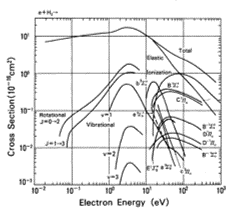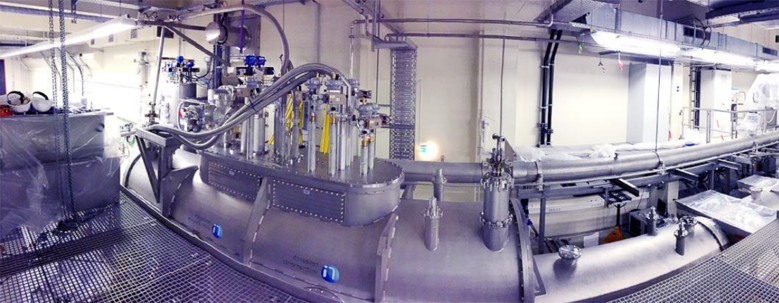PhD Projects
PhD-positions:
Hybrid plasma simulations for the KATRIN experiment
|
The astroparticle-physics experiment KATRIN involves a beam tube filled with plasma. In order to understand the experimental resulted it is inevitable to model the plasma. The challenge here is that different physical effects (ionisation, recombination, plasma-wall interaction) come into play and that plasma itself is stronly inhomogenous. Multi-scale and multi-physics models are therefore needed. A Monte Carlo model for atomic and molecular processes as well as independent fluid and kinetic models have been developed in preceding theses. Starting point for this thesis is the Particle-in-Cell model for the plasma. From there a hybrid model shall be established that allows to model high and low density parts of the plasma simultaneously. The ultimate goal is to establish a physically correct representation of the plasma potential. That will be the basis for the evaluation of experimental results. A major part of the work will be devoted to numerical methods - a profound knowledge of C++ is beneficial. Basic knowledge in fluiddynamics, plasmaphysics or electrodynamics is a plus. |
|
|
|
|
Scientific environment: KATRINThe international Karlsruhe Tritium Neutrino (KATRIN) experiment aims at measuring the fundamental mass scale of electron neutrinos with a sensitivity of 200 meV. The heart of the experiment is 10 m long beam tube that is the windowless source of high energy β electrons. These electrons originate from neutral tritium injected into the beam tube, that is pumped off at both ends. Through a series of complicated secondary electron production mechanisms a plasma forms inside the tube. The electric plasma potential has an impact on the initial energy of the primary β electrons, which in turn affects the neutrino mass measurement. Unfortunately a direct measurement of the plasma potential is imposible. Detailed simulations are therefore necessary. The key ingredient to these simulations is the electron energy distribution. |
 Cross sections of atomic processes |
Experimental environment: Windowless tritium sourceWithin the windowlss tritium source the neutral gas is ionized by β decay electrons. Through elastic and inelastic colision these electrons cool down to the ambient gas temperature. Within this masters project a more refined model of electron-gas interaction will be implemented. The goal is to determine the electron- and ion-energy distribution at every point within the source. |
|

 Home page
Home page
